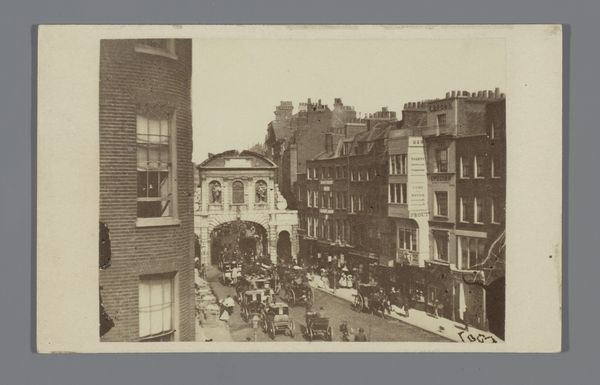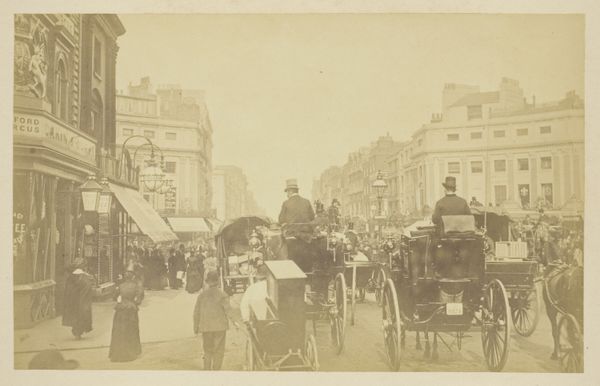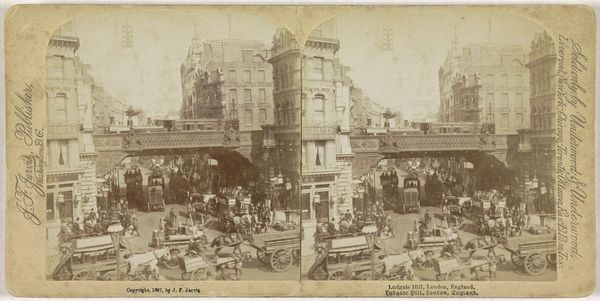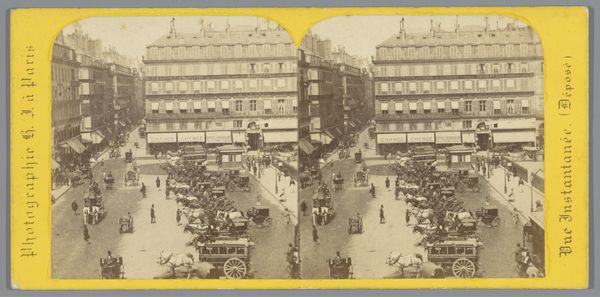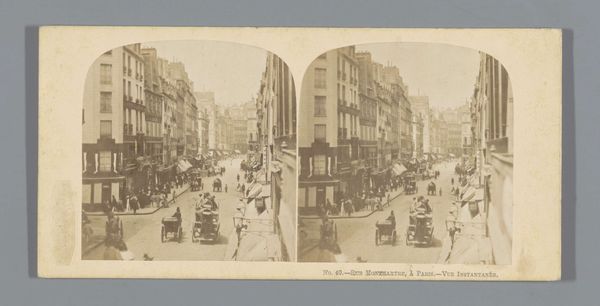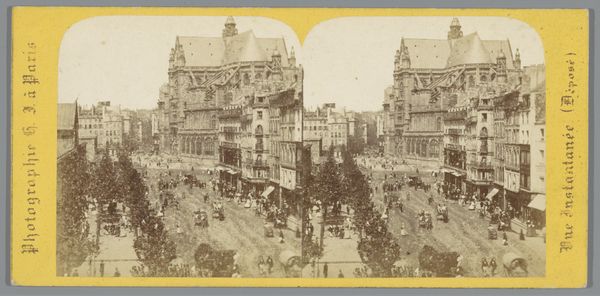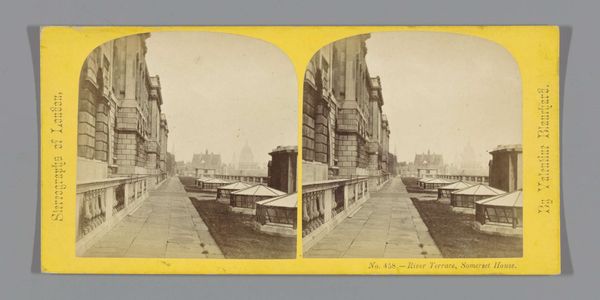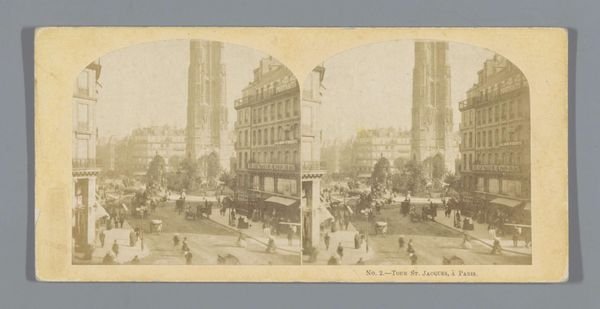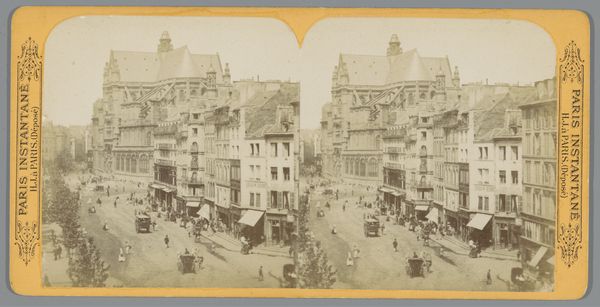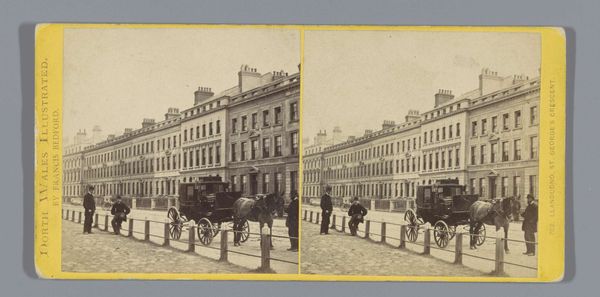![[Group of 4 Stereograph Views of Ludgate Hill, London, England] by J. F. Jarvis](/_next/image?url=https%3A%2F%2Fd2w8kbdekdi1gv.cloudfront.net%2FeyJidWNrZXQiOiAiYXJ0ZXJhLWltYWdlcy1idWNrZXQiLCAia2V5IjogImFydHdvcmtzL2U1Y2QzM2RlLTAxNGUtNGEzOS04OTRmLTEwOGJmZTNlMDc1My9lNWNkMzNkZS0wMTRlLTRhMzktODk0Zi0xMDhiZmUzZTA3NTNfZnVsbC5qcGciLCAiZWRpdHMiOiB7InJlc2l6ZSI6IHsid2lkdGgiOiAxOTIwLCAiaGVpZ2h0IjogMTkyMCwgImZpdCI6ICJpbnNpZGUifX19&w=3840&q=75)
[Group of 4 Stereograph Views of Ludgate Hill, London, England] 1850 - 1919
0:00
0:00
photography, gelatin-silver-print
#
street-photography
#
photography
#
gelatin-silver-print
#
19th century
#
cityscape
#
building
Dimensions: Mounts approximately: 8.9 x 17.8 cm (3 1/2 x 7 in.)
Copyright: Public Domain
Curator: This gelatin-silver print, captured sometime between 1850 and 1919, offers us a glimpse into a bustling Ludgate Hill in London. It is part of a stereograph series. Editor: The first thing that strikes me is the sheer density of activity, the crush of people and carriages. It almost feels claustrophobic, yet the light filtering through hints at the promise of modernity and progress. Curator: As a stereograph, it was designed to create an illusion of three-dimensionality when viewed through a stereoscope, bringing the viewer right into the heart of this urban landscape. Street photography was really coming into its own at this time. Editor: I’m curious about who is represented here and who isn't. It seems to privilege a particular social class with leisure, those who could afford carriages and live in the imposing buildings dominating the street. The laborers are in the background or actively working to support this social hierarchy. Curator: The placement of the monuments in the scene – like that large obelisk – also adds to the story of British power at the height of its imperial ambitions. There's definitely a socio-political statement interwoven within this photograph of everyday life. Editor: It's also worth considering what's absent. What stories aren't being told? I imagine the realities of poverty, inequality, and social unrest bubbling beneath the surface, issues this image, like many of its time, conveniently overlooks. Curator: These stereographs, while seemingly innocuous, served as potent tools for shaping perceptions of British society, both at home and abroad. The focus tends to remain fixed on prosperity, obscuring anything that may suggest trouble. Editor: A reminder that every image is constructed and carries within it implicit biases and agendas, no matter how objective it might appear at first glance. The details we chose to emphasize can reveal profound truths about social dynamics. Curator: Indeed, art often reflects the societal gaze of its time, a gaze we need to analyze with a critical lens to better understand our present. Editor: I think it gives us a glimpse into London life at that time, while prompting reflection on how visual culture plays an important role in shaping public opinion and reinforcing social structures.
Comments
No comments
Be the first to comment and join the conversation on the ultimate creative platform.
